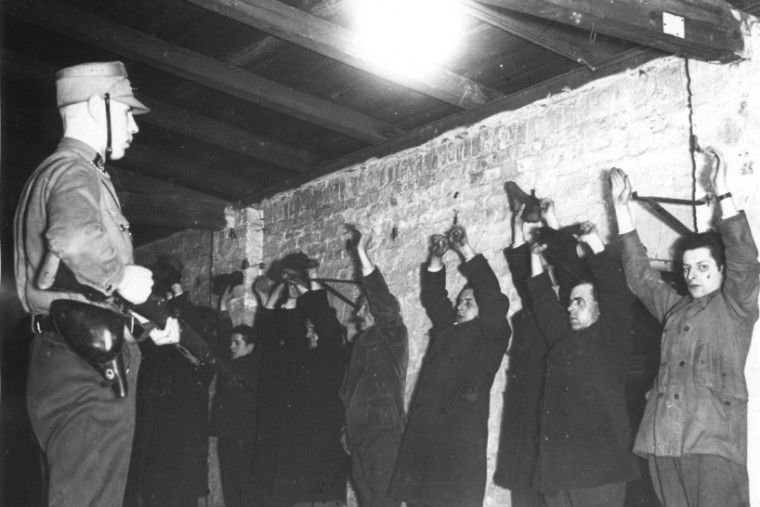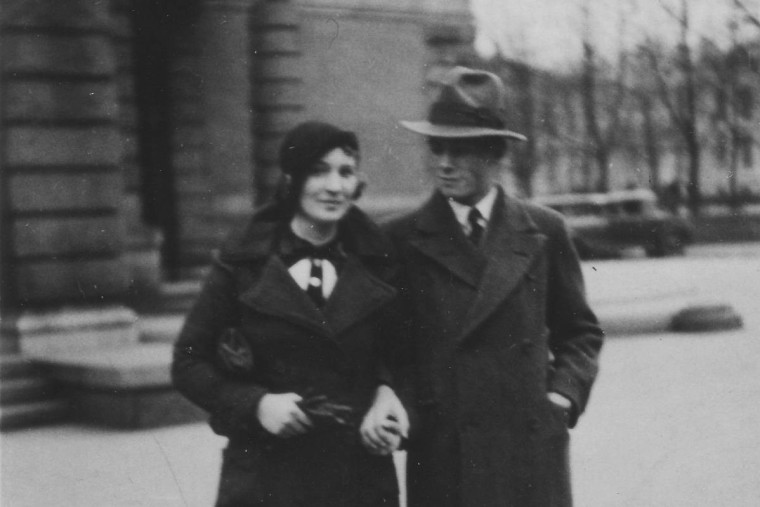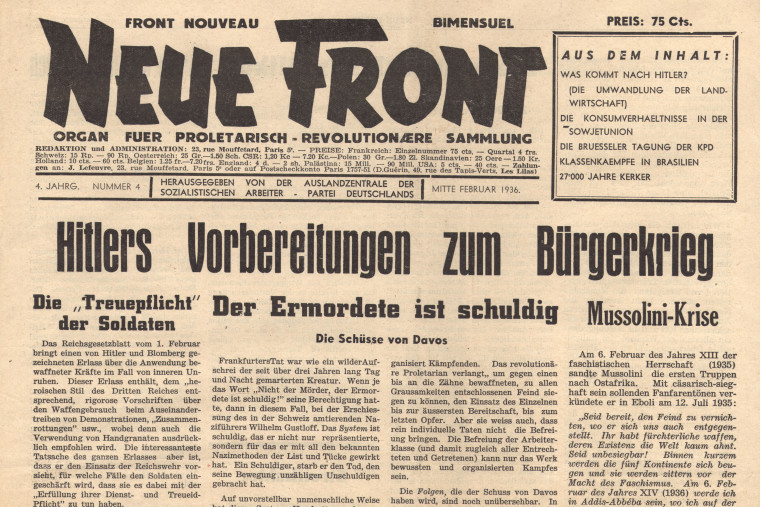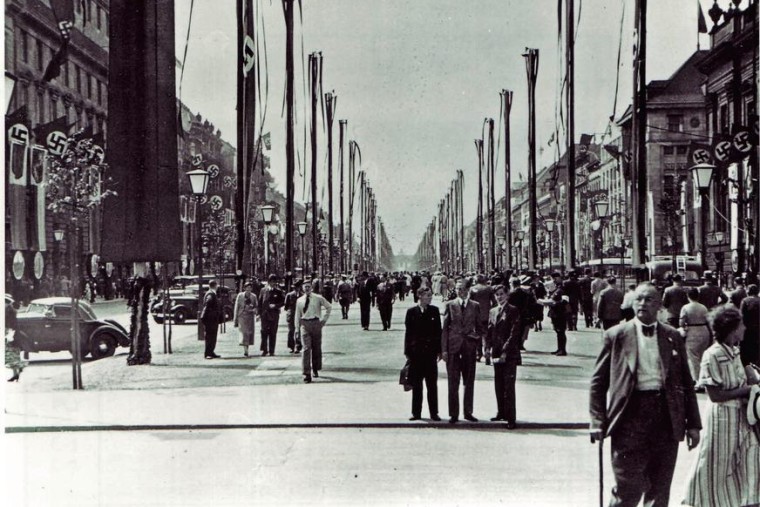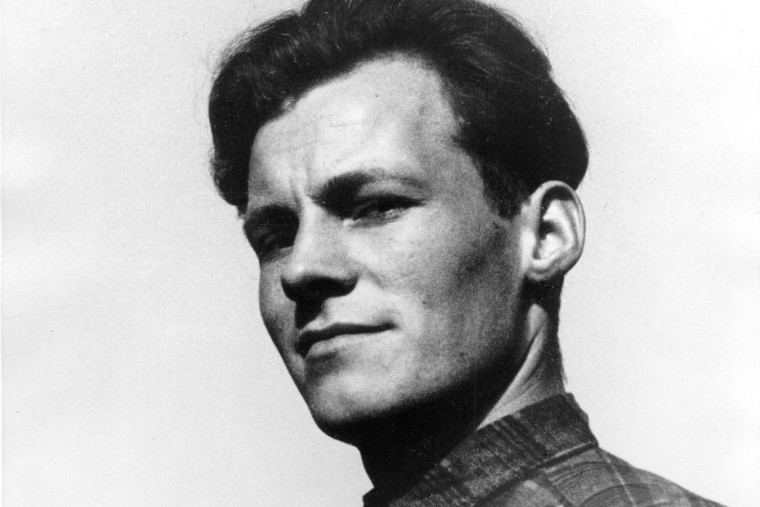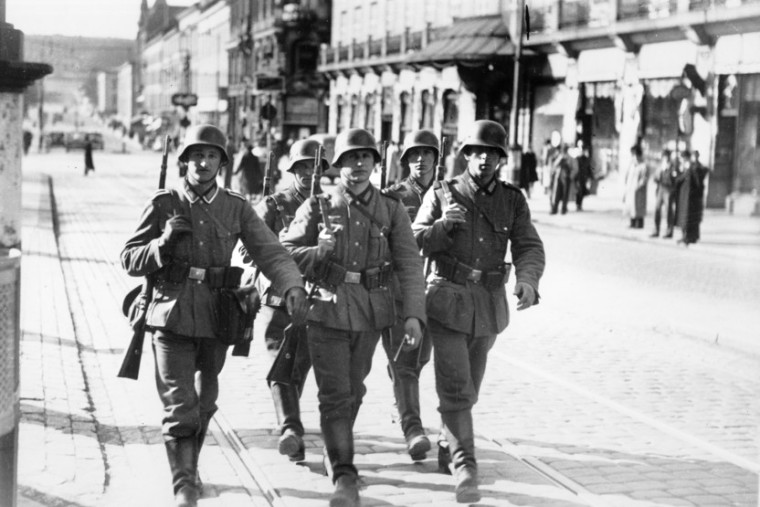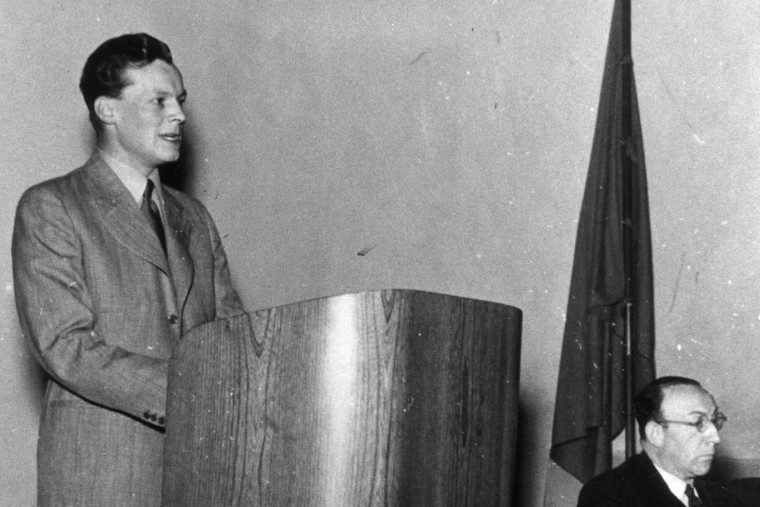For the “other” Germany – Resistance against Hitler 1930–1945

© Archiv der sozialen Demokratie, Bonn
As an adolescent, Willy Brandt is already a resolute opponent of National Socialism. In 1933, he immediately offers resistance against the totalitarian dictatorship which Hitler and the NSDAP (National Socialist German Workers’ Party) establish. Pursued by the Nazi regime, Brandt finds asylum in Norway and later in Sweden. In exile, the democratic socialist, who establishes many international contacts, belongs to the outstanding representatives of the “other” Germany. From Scandinavia, Brandt struggles in the political arena for the liberation of Europe from the Nazi tyranny.
Struggle against the NSDAP in the Weimar Republic
Early on, Herbert Frahm, as Willy Brandt was still named in his childhood and youth, opposes Adolf Hitler’s NSDAP (National Socialist German Workers’ Party). In contributions to newspapers and in assemblies of the Socialist Workers’ Youth (SAJ), the youth organisation of the SPD, the young Lübeck politician condemns the harassment and terror campaigns of the NS movement already in 1930.
To curb the ever increasing threat from the right, he demands a militant socialist policy from the SPD instead of a timid wait-and-see attitude. But such a change of direction does not come about, so that a deeply discouraged Frahm leaves the party in October 1931. The 17-year-old changes over to the newly founded SAPD, the Socialist Workers’ Party of Germany, and assumes leadership of the local party youth organisation in Lübeck. As a left-wing socialist split-off from social democracy, the SAPD is striving for a united revolutionary front of social democrats and communists in the struggle against the Nazis. However, it remains a fringe party.
Persecution and resistance after Hitler’s rise to power
When Hitler is appointed Chancellor of the German Reich on 30 January 1933 and begins to establish a dictatorship in Germany, Herbert Frahm and his friends in their Lübeck SAPD group immediately offer resistance. Their actions come at a high risk. There is always the threat of arbitrary arrest and brutal mistreatment by Nazi troops who also do not hesitate to commit murder.
As a result of persecution, the SAPD decides at a party convention in Dresden in mid-March 1933 to go underground and simultaneously establish foreign bases of operation. Herbert Frahm also takes part in the “illegal” meeting and on the trip there uses the alias Willy Brandt for the first time. Two weeks later, the 19-year-old is given the assignment of establishing a base of operations for the party in Norway.
Activities in Norwegian exile
After his arrival in Oslo in early April 1933, Willy Brandt continues his resistance against the Nazi regime ruling Germany. In this endeavour he is supported by DNA, the Norwegian Workers’ Party, a sister party of the SAPD. Soon afterwards the young German publishes, in the Norwegian workers’ press using the Norwegian language, his first contributions which he devotes to the causes of the victory of the NSDAP in Germany. In lectures as well, Brandt attempts to inform the Norwegian public about the terrible situation in his home country. He does not believe in a quick end to the Nazi regime and warns: “Hitler means war!”
Together with the love of his youth, Gertrud Meyer, and other German refugees, Willy Brandt establishes a small SAPD group in Oslo. His friends produce material for underground work and smuggle it into the “Third Reich.” The exile group in Norway also takes up the cause of politically persecuted individuals in Germany. In 1935/36, Brandt is involved significantly in a campaign which leads to the awarding of the Nobel Peace Prize to the incarcerated German publicist, Carl von Ossietzky.
Underway in Europe
For Willy Brandt, many trips through Europe are part of his anti-fascist resistance endeavours. Sweden, Denmark, France, the Netherlands, Belgium, Germany, Spain, Great Britain, Poland and Czechoslovakia are the countries in which he is a visitor between 1933 and 1939. Usually international meetings and conferences of left-wing socialist organisations are on his programme. Brandt travels most often to Paris to participate in consultations with the foreign headquarters of the SAPD. Its director is his fatherly friend, Jacob Walcher, with whom he also maintains close contact through letters.
His most dangerous mission takes Willy Brandt to Germany in autumn 1936. On an assignment for his party and disguised as the Norwegian student, Gunnar Gaasland, he lives in Berlin for three months and makes contacts there with the few SAPD members still active in the underground. In spring 1937, the leaders of his party send the 23-year-old as a political observer to Barcelona. In the Spanish Civil War, Brandt stands on the side of the republican forces who oppose the fascist troops. He visits the front but does not take an active part in combat.
Deprivation of citizenship and failure of the people’s front
Not until five years have passed do the officials in Germany discover that Herbert Frahm and Willy Brandt are one and the same person. Due to his resistance against the Nazi regime, Brandt is deprived of his German citizenship in September 1938. Nevertheless, the young left-wing socialist remains in the sights of the Gestapo.
Basically he advocates the formation of an anti-fascist people’s front which is supposed to bring under one umbrella all leftist parties as well as progressive bourgeois elements. Unfortunately, this dream bursts when the Soviet dictator, Josef Stalin, agrees to a pact with Hitler in August 1939. While the communists loyal to Moscow approve of the pact, Willy Brandt sharply criticises the Soviet Union. He accuses Stalin of betraying the workers’ movement.
Resistance during WW II and plans for peace
During World War II, the German expatriate supports the anti-Hitler coalition which Great Britain, the Soviet Union and the USA form against the “Third Reich” in 1941. Since his escape to neutral Sweden in 1940, Brandt maintains numerous contacts with representatives of the three allies. As a publicist in Stockholm, he devotes himself above all to the issue of a strategy for peace after the military victory over Hitler.
Together with German and international democratic socialists, Willy Brandt plans post-war programmes for Germany, Europe and the world. For all practical purposes, after the SAPD ceased to exist as a party with the start of the WW II, Brandt joins the SPD again in 1944. Albeit, he consistently speaks for co-operation by social democrats and communists and for forming a unity party of the workers’ movement.
Horrified by the million-fold crimes of National Socialism, Brandt wishes for the total defeat of the “Third Reich” in the near future. However, he unfailingly emphasises that not all Germans are Nazis and that there is no collective guilt. Still, his hope that the Germans would themselves bring about the fall of the Nazi regime through a revolution is not fulfilled.
The overthrow attempt by the resistance group “Kreisauer Kreis” (“Kreisau Circle”) with which Brandt has been loosely associated since 1943, fails on 20 July 1944. Not until the total occupation of Germany by American, British and Soviet troops and the “unconditional surrender” of the German Wehrmacht on 8 May 1945, is Nazi tyranny in Europe finally brought to an end.
References to literature:
Willy Brandt – Berliner Ausgabe, Bd. 1: Hitler ist nicht Deutschland. Jugend in Lübeck – Exil in Norwegen 1928–1940, bearb. von Einhart Lorenz, Bonn 2002.
Willy Brandt – Berliner Ausgabe, Bd. 2: Hitler ist nicht Deutschland. Zwei Vaterländer. Deutsch-Norweger im schwedischen Exil – Rückkehr nach Deutschland 1940-1947, bearb. von Einhart Lorenz, Bonn 2000.
Willy Brandt: Links und frei. Mein Weg 1930–1950, Hamburg 1982 (Neuauflage 2012).
Willy Brandt: Verbrecher und andere Deutsche. Ein Bericht aus Deutschland 1946, bearb. von Einhart Lorenz, Bonn 2007 (Bd. 1 der Willy-Brandt-Dokumente).
